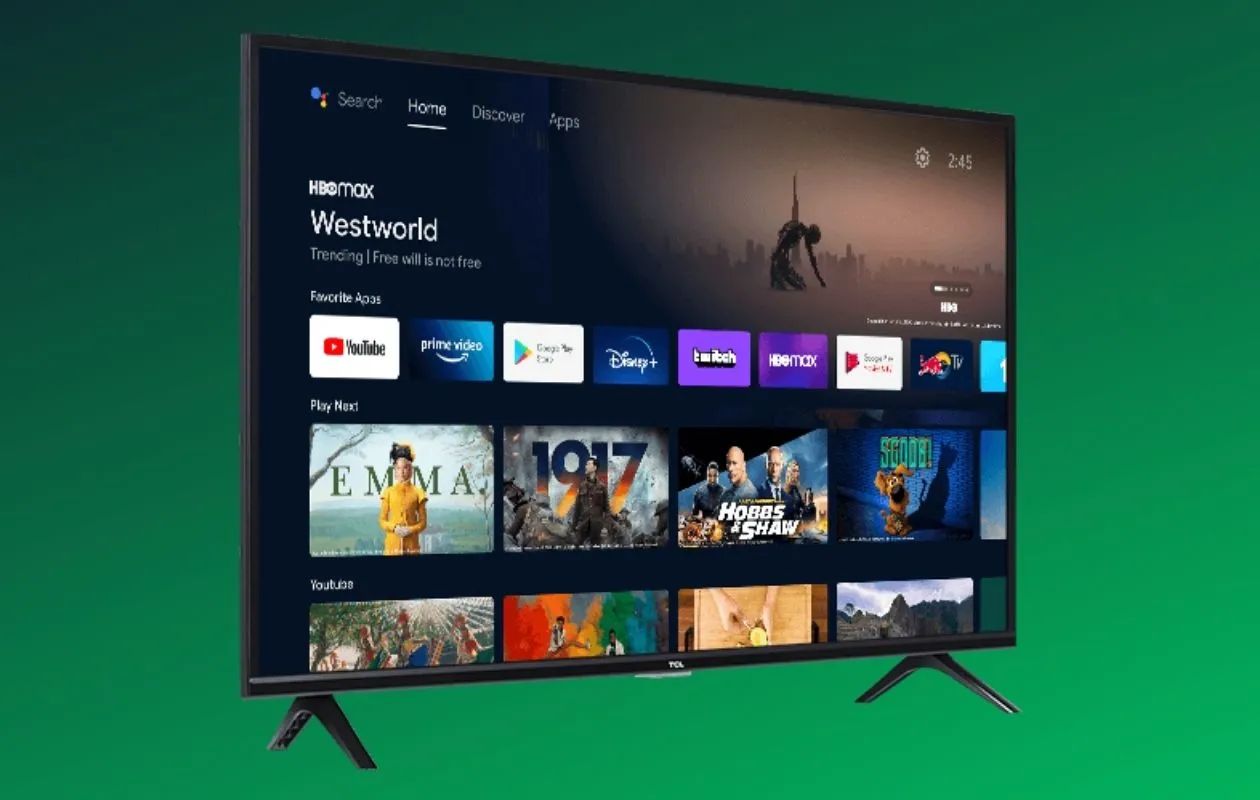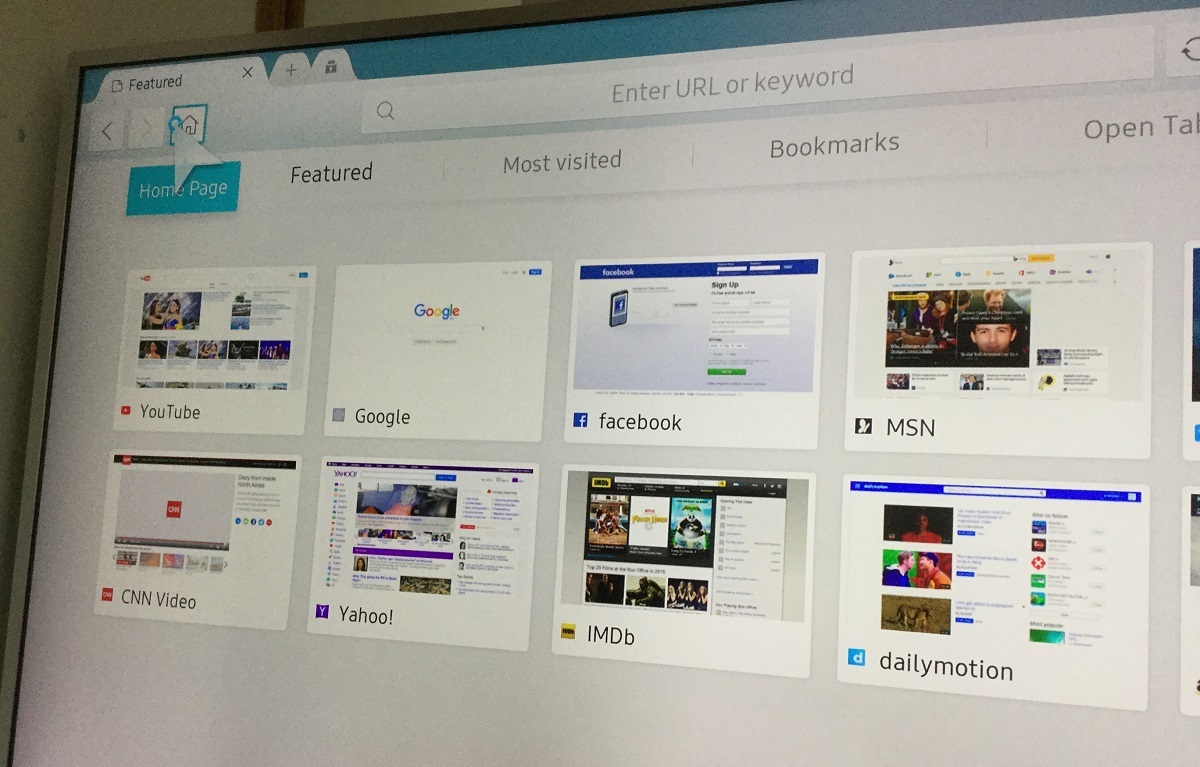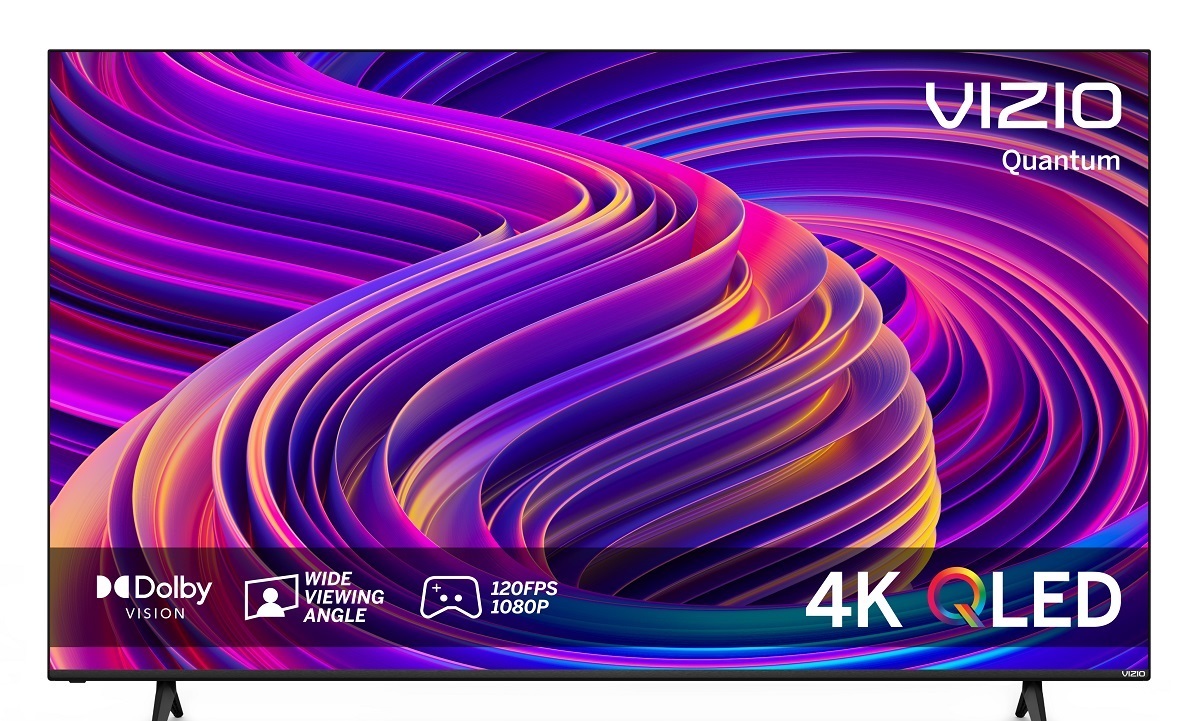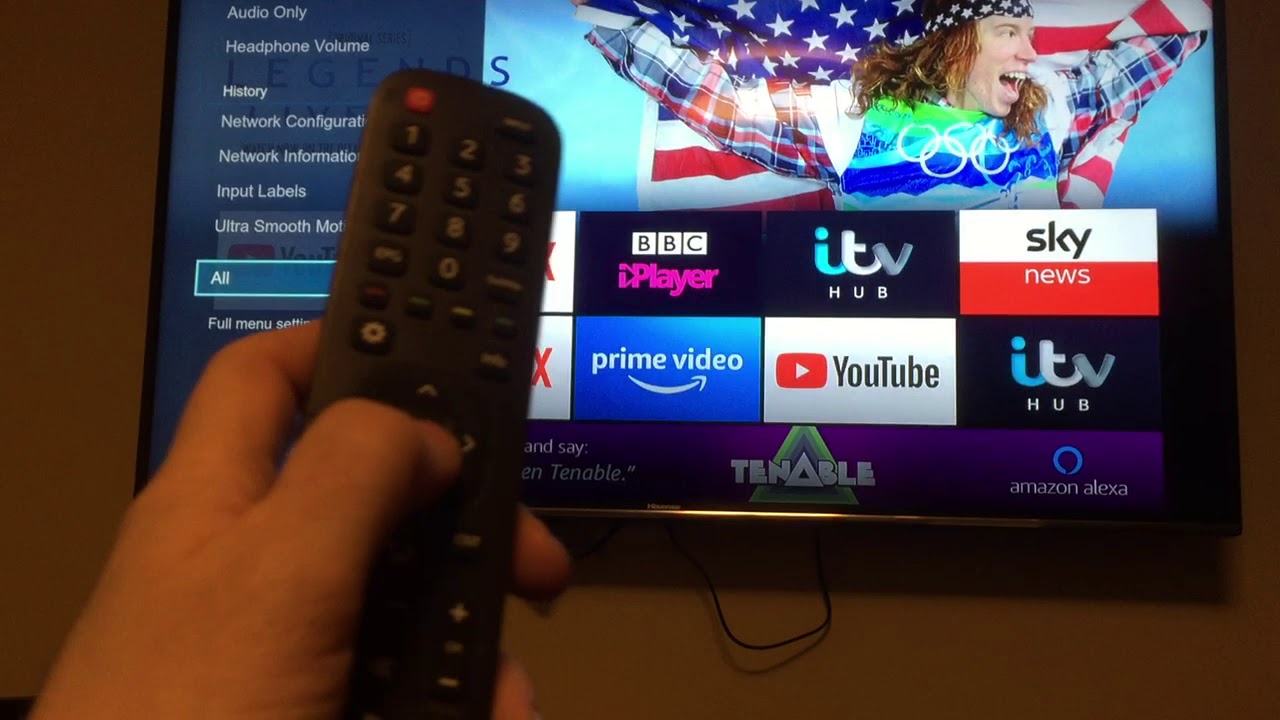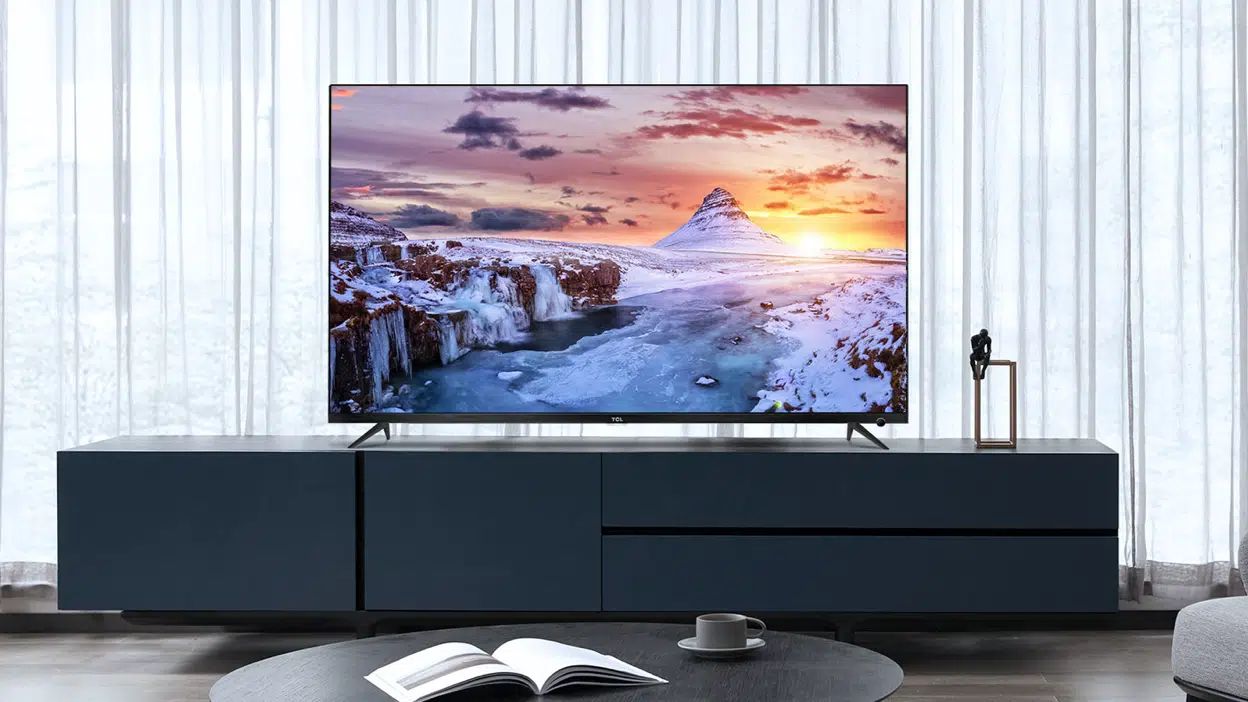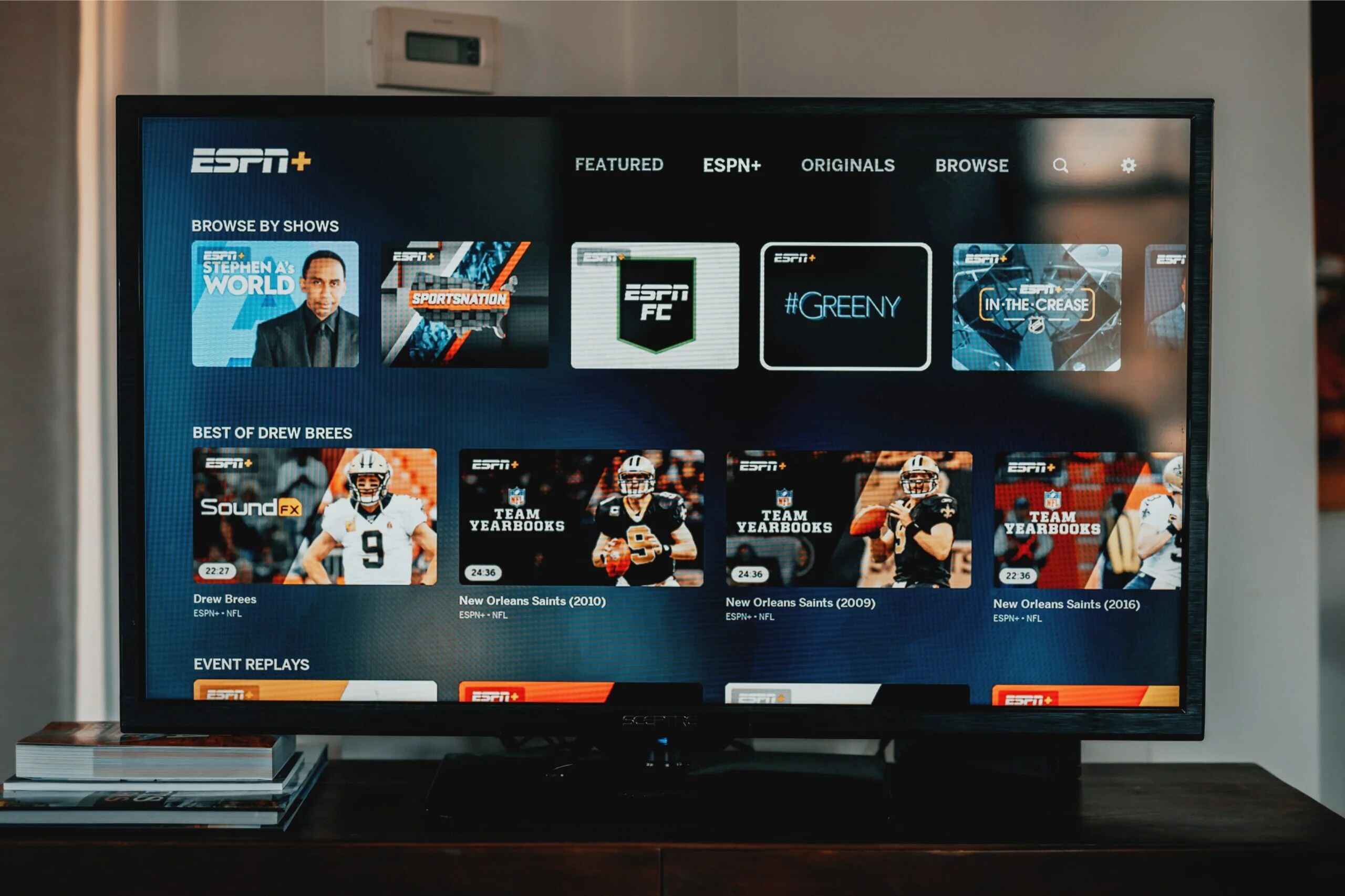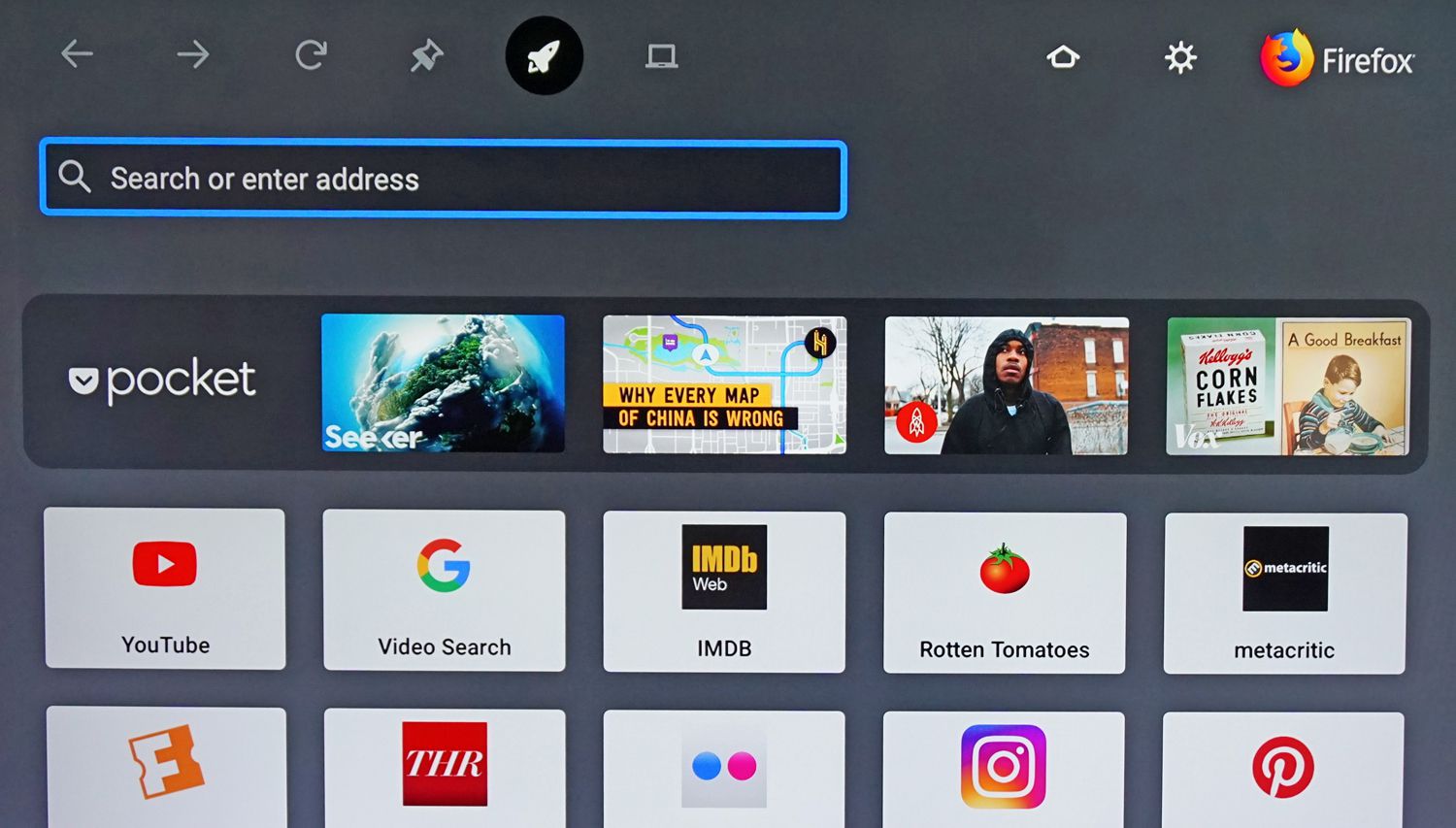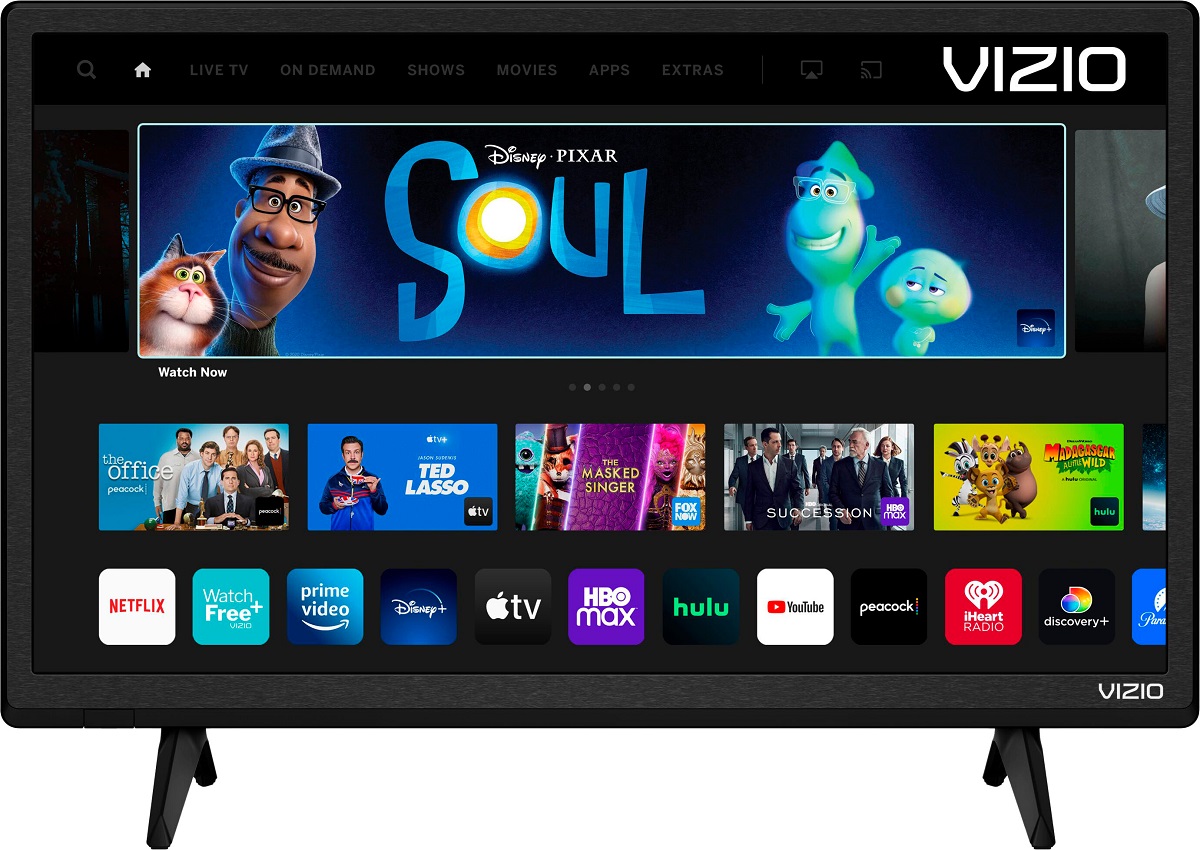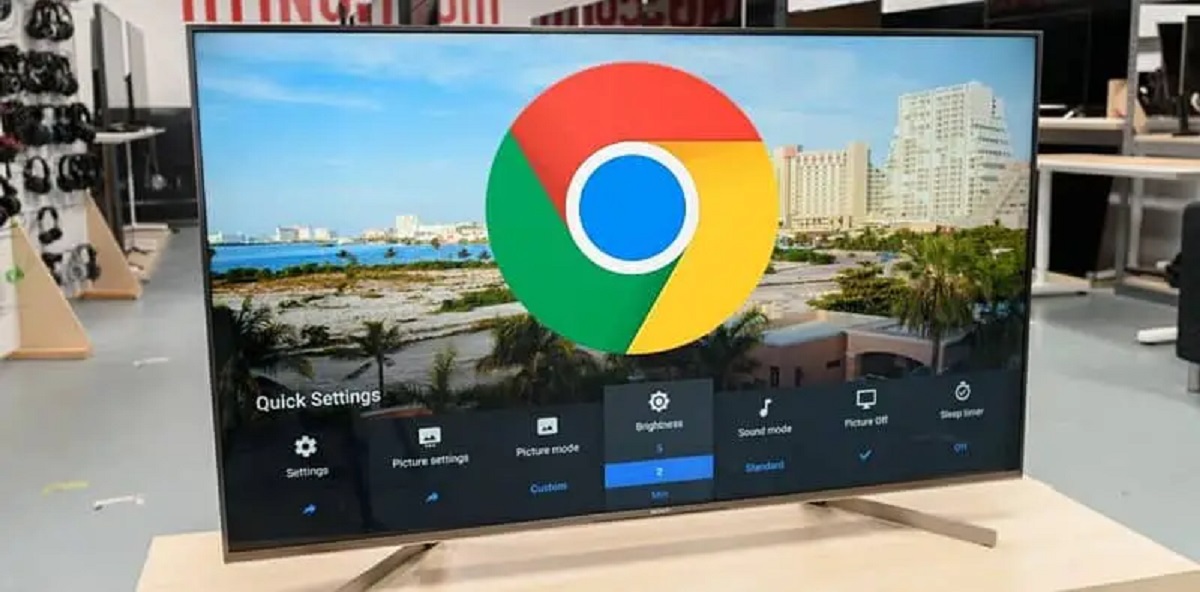Introduction
Smart TVs have revolutionized the way we consume content by bringing a world of entertainment right to our living rooms. While they are primarily known for streaming movies, TV shows, and playing games, did you know that you can also browse the internet on your smart TV? That’s right – you can surf your favorite websites, check social media, shop online, and much more, all without leaving the comfort of your couch.
In this article, we will explore the various methods of connecting your smart TV to the internet and guide you on how to browse the web effectively. Whether you are using a wired or wireless connection, we’ve got you covered. We will also walk you through the steps of setting up your internet connection and provide some troubleshooting tips to ensure a smooth browsing experience.
With the ability to browse the internet on your smart TV, you can instantly access a wealth of information and entertainment right from your television. Imagine watching a thrilling TV series and being able to quickly look up the actor’s previous work or reading reviews of the latest blockbuster movie without having to switch devices. It adds a whole new level of convenience and interactivity to your entertainment experience.
So, if you’re ready to dive into the world of internet browsing on your smart TV, let’s get started with connecting to the internet and discovering all the amazing possibilities that await you.
Connecting Your Smart TV to the Internet
Before you can start browsing the internet on your smart TV, you need to ensure that it is connected to the internet. There are two main methods for connecting your smart TV: using a wired connection or a wireless connection. Let’s explore both options.
Using a Wired Connection: If your smart TV is in close proximity to your router, using a wired connection is often the most reliable and fastest option. To do this, you will need an Ethernet cable. Simply connect one end of the cable to the Ethernet port on your smart TV and the other end to an available Ethernet port on your router. Once connected, your smart TV should automatically detect the wired connection, and you will be ready to browse the internet.
Using a Wireless Connection: If you prefer a wireless connection for your smart TV or if running an Ethernet cable is not feasible, you can connect your smart TV to your Wi-Fi network. To do this, navigate to the settings menu on your smart TV and look for the Wi-Fi or Network options. Select your Wi-Fi network from the list of available networks and enter your Wi-Fi password when prompted. Once connected, your smart TV will be ready to access the internet wirelessly.
Setting up a stable and reliable internet connection is crucial for smooth browsing on your smart TV. If you experience any issues with your internet connection, make sure to check that your router is functioning properly, restart your smart TV and router, and ensure that you are within range of your Wi-Fi signal. If necessary, you can also try moving your router closer to your smart TV or investing in a Wi-Fi range extender to enhance your internet signal strength.
Once you are successfully connected to the internet, you can start enjoying the myriad of online content available on your smart TV. In the next section, we will uncover how to effectively browse the internet and make the most out of your smart TV’s capabilities.
Using a Wired Connection
When it comes to connecting your smart TV to the internet, a wired connection is often the most reliable and stable option. Using an Ethernet cable, you can establish a direct connection between your smart TV and your router, ensuring a fast and seamless browsing experience. Here’s how to set up a wired connection on your smart TV.
1. Gather the necessary equipment: To connect your smart TV using a wired connection, you will need an Ethernet cable. Ensure that you have a cable of sufficient length to reach from your smart TV to your router.
2. Locate the Ethernet port: On the back or side of your smart TV, you will find an Ethernet port. It resembles a larger version of a phone jack or USB port. Plug one end of the Ethernet cable into this port.
3. Connect to the router: Take the other end of the Ethernet cable and connect it to an available Ethernet port on your router. Depending on your router model, you may have multiple Ethernet ports to choose from.
4. Configure your smart TV: Once you have made the physical connection, navigate to the settings menu on your smart TV. Look for the Network or Internet options. Select the wired connection option, and your smart TV should automatically detect the connection.
5. Test the connection: To ensure that the wired connection is working correctly, you can perform a connection test or try accessing a website on your smart TV’s built-in browser. If everything is set up correctly, you should be able to browse the internet seamlessly.
Using a wired connection offers several advantages, including increased stability and faster speeds compared to wireless connections. It is particularly beneficial if you have a large household with multiple devices that may compete for Wi-Fi bandwidth. Additionally, a physical connection reduces the risk of interference from other electronic devices or thick walls that can weaken wireless signals.
However, keep in mind that a wired connection may not always be feasible, especially if your router is located far away from your smart TV. In such cases, a wireless connection is a convenient alternative. We will explore how to set up a wireless connection in the next section.
Using a Wireless Connection
If running an Ethernet cable from your smart TV to your router is not feasible or if you prefer the convenience of a wireless connection, you can easily connect your smart TV to the internet using Wi-Fi. Here’s a step-by-step guide to setting up a wireless connection on your smart TV.
1. Access the settings menu: Using your smart TV remote control, navigate to the settings menu. Look for the Network or Internet options.
2. Enable Wi-Fi: In the network settings, locate the Wi-Fi option and toggle it on. Your smart TV will then scan for available Wi-Fi networks.
3. Select your Wi-Fi network: Once the scanning process is complete, a list of available Wi-Fi networks will be displayed on your smart TV screen. Select your Wi-Fi network from the list.
4. Enter your Wi-Fi password: If your Wi-Fi network is password-protected (which is highly recommended for security reasons), you will be prompted to enter the password. Use your remote control to enter the password carefully, making sure to double-check your entries for accuracy.
5. Connect to the network: After entering the correct password, your smart TV will attempt to connect to the Wi-Fi network. If the connection is successful, you will receive a confirmation message, and your smart TV will be ready to browse the internet wirelessly.
Setting up a wireless connection allows you to enjoy the benefits of internet browsing on your smart TV without the need for physical cables. It offers flexibility and convenience, as you can move your TV around the room or connect to different Wi-Fi networks easily. However, keep in mind that wireless connections may be subject to interference, leading to potential fluctuations in speed and reliability. It is recommended to place your smart TV within close proximity to your router for a strong and stable Wi-Fi signal.
If you experience any connection issues or a weak Wi-Fi signal, you could consider the following remedies:
- Move your router to a central location in your home to minimize obstructions and increase signal strength.
- Invest in a Wi-Fi range extender to amplify the signal and extend the coverage area.
- Reduce interference by minimizing the number of other devices connected to your Wi-Fi network or placing them farther away from the router.
- Ensure that your router firmware is up to date, as outdated firmware can cause connectivity problems.
By following these steps and optimizing your wireless connection, you can enjoy seamless internet browsing on your smart TV and make the most of its capabilities. In the next section, we will guide you through setting up your internet connection on your smart TV.
Setting Up Your Internet Connection
Once your smart TV is connected to the internet, the next step is to ensure that the internet connection is properly configured. This step is essential for seamless browsing and accessing online content. Here’s a guide on how to set up your internet connection on your smart TV.
1. Access the settings menu: Using your smart TV remote control, navigate to the settings menu. Look for the Network or Internet options.
2. Check the connection status: In the network settings, you will find the option to check the status of your internet connection. This will display whether your smart TV is currently connected to the internet or not. If there are any issues with the connection, it will be indicated here.
3. Configure the connection: If your smart TV is not connected to the internet, you will need to configure the connection. Select the option to set up a new connection or modify an existing one.
4. Select the connection type: Choose the type of internet connection you are using. This could be either a wired connection or a wireless connection, depending on how you have connected your smart TV to the internet.
5. Enter the necessary details: Depending on the type of connection, you may be required to enter specific details. This could include the IP address, subnet mask, gateway, and DNS settings. If you are unsure about these details, you can typically select the “Automatic” or “DHCP” option, which will automatically obtain the necessary information from your router.
6. Test the connection: Once you have entered the necessary details, you can run a connection test to ensure that your smart TV is properly connected to the internet. The test will check the connection speed, stability, and latency. If any issues are detected, you can troubleshoot them accordingly.
7. Update firmware: It is important to regularly check for firmware updates for your smart TV. Firmware updates often include bug fixes and optimizations that can improve your internet browsing experience. Check the manufacturer’s website or the TV’s settings menu for firmware update options.
Setting up your internet connection properly ensures that your smart TV can access the internet efficiently, allowing you to enjoy smooth browsing, streaming, and online activities. Remember to periodically check your connection status and perform speed tests to ensure optimal performance.
In the next section, we will dive into how to browse the internet on your smart TV and make the most out of your internet connection.
Browsing the Internet on Your Smart TV
Now that you have successfully connected your smart TV to the internet, it’s time to explore the world of internet browsing right from your television. Smart TVs come with built-in web browsers that allow you to visit websites, search the internet, and access a wide range of online content. Let’s discover how to make the most of your smart TV’s browsing capabilities.
Using a Built-in Web Browser: Most smart TVs come equipped with a web browser that allows you to navigate websites, similar to how you would on a computer or smartphone. To access the web browser, locate the app or icon on your smart TV’s home screen, or check the app list. Launch the web browser, and you will be greeted with a familiar interface where you can enter website addresses, search the web, and interact with website content.
Navigating Websites: Once you have launched the web browser, you can browse websites by using your smart TV remote control. The navigation buttons on the remote control facilitate scrolling, clicking links, and selecting elements on websites. Your TV may also support voice control or motion control for easier navigation. To click on links or buttons, simply use the remote’s cursor or pointer to select the desired element and press the OK or Enter button.
Entering Text Using the Remote Control: Entering text can be a bit challenging on a smart TV due to the limited input options. However, most smart TVs provide an on-screen keyboard that allows you to type using your remote control. Simply navigate to the text input field, select it, and the on-screen keyboard will appear. Use the remote control’s navigation buttons to move the cursor and select the desired letters.
Controlling Playback and Video Streaming: Apart from browsing websites, smart TVs offer enhanced functionality for video playback and streaming. You can watch videos from popular streaming services like YouTube, Netflix, Hulu, and more. The remote control usually has dedicated buttons for play, pause, rewind, and fast forward. You can also use the interface to search for specific movies, TV shows, or channels of your choice.
While browsing the internet on your smart TV, keep in mind that the browsing experience may not be as seamless or feature-rich as on a computer or smartphone. Due to the TV’s screen size and remote control limitations, some website features, such as complex forms or interactive elements, may not work as expected. Additionally, the browsing speed may vary depending on your internet connection and the processing power of your smart TV.
Nevertheless, browsing the internet on your smart TV opens up endless possibilities for accessing online content, staying updated with news and trends, and exploring a wide range of websites from the comfort of your living room. Enjoy the convenience and entertainment that internet browsing brings to your smart TV experience.
Using a Built-in Web Browser
One of the key features of a smart TV is its ability to browse the internet using a built-in web browser. This functionality opens up a world of online content and allows you to access websites, search for information, shop online, and much more. Here’s a guide on how to effectively use the built-in web browser on your smart TV.
Locating the Web Browser: To access the web browser on your smart TV, look for the browser app or icon on the home screen or within the app list. Once you find it, select and launch the web browser to begin browsing the internet.
Entering Website Addresses: Similar to a traditional web browser, you can enter website addresses directly into the smart TV’s browser. Use the on-screen keyboard or the remote control’s navigation buttons to type the website address or URL in the designated field. After entering the address, press the Enter or OK button on your remote control to navigate to the website.
Searching the Web: The built-in web browser on your smart TV also allows you to perform web searches without visiting a specific website first. Find the search bar within the browser’s interface, usually located at the top of the screen, and use the on-screen keyboard or remote control to enter your search query. Once you’ve entered your search term, press Enter or OK to initiate the search and view the search results on your TV screen.
Interacting with Website Content: While browsing websites on your smart TV, you can interact with website content using the remote control. Use the navigation buttons to scroll up and down, left and right, to read the content and navigate through web pages. To click on links or buttons, use the remote control’s cursor or pointer to select the desired element and then press the OK or Enter button to activate the link or button.
Zooming and Adjusting Website Layout: As smart TV screens are typically larger than computer or smartphone screens, it may be necessary to adjust the website layout or zoom in to improve readability. Within the browser’s settings or options, look for features like zoom, text resizing, or page layout settings. Experiment with these options to find the best display settings for your browsing preferences.
Managing Bookmarks and History: The built-in web browser on your smart TV may also allow you to bookmark your favorite websites for quick access in the future. Additionally, you can manage your browsing history, making it easier to revisit previously visited websites. Explore the browser’s settings or options menu to access these features.
Using the built-in web browser on your smart TV, you can explore a wide range of online content, access websites, and engage in various online activities. While the browsing experience on a smart TV may not be as robust as on other devices, it provides a convenient way to stay connected and access information from the comfort of your living room. Enjoy the versatility and possibilities that the built-in web browser brings to your smart TV experience.
Navigating Websites
Once you have launched the built-in web browser on your smart TV, it’s time to explore and navigate the websites of your choice. Navigating websites on a TV screen requires a slightly different approach compared to traditional computer or smartphone browsing. Here are some tips to help you effectively navigate websites on your smart TV.
Scrolling: When viewing websites on your smart TV, you can scroll up and down to read the content. Use the navigation buttons on your remote control to move the on-screen cursor or pointer. Alternatively, some smart TVs support motion control or voice control for scrolling. Experiment with different methods to find the most comfortable and convenient option for you.
Clicking Links and Buttons: To click on links or buttons within a webpage, position the cursor or pointer over the desired element and press the OK or Enter button on your remote control. This action simulates a mouse click and will activate the link or button, redirecting you to a new page or performing the associated action.
Switching between Tabs or Windows: Some smart TV browsers allow you to open multiple tabs or windows, similar to a desktop browser. This feature enables you to browse multiple websites simultaneously. To switch between different tabs or windows, look for the tab or window management options within the browser interface. Typically, this will be indicated by a tab bar or a window switcher icon.
Entering Forms and Input Fields: If you need to enter text into forms or input fields on a website, the smart TV’s web browser usually provides an on-screen keyboard. Navigate to the desired input field and select it to bring up the on-screen keyboard. Use the remote control to navigate the keyboard and input your text. Once finished, confirm your entry by selecting “Done” or pressing the OK or Enter button.
Zooming In and Out: Due to the larger screen size of a smart TV, website text and images may appear smaller and hard to read. To improve readability, the browser may include zoom functionality. Look for zoom options within the browser’s settings or options menu. Adjusting the zoom level will enlarge the text and images, making them easier to view.
Managing History and Bookmarks: Just like on a computer or smartphone browser, you can manage your browsing history and save bookmarks on your smart TV. Access the browser’s settings or options menu to find these features. Clearing your browsing history can help maintain privacy, while bookmarking websites can provide quick access to your favorite sites in the future.
Navigating websites on a smart TV offers a unique experience, allowing you to explore online content on a larger screen from the comfort of your living room. While the browsing process may be slightly different, with practice, you’ll become more comfortable with using the remote control to navigate, click links, and interact with website elements. Embrace the convenience and multimedia capabilities of browsing on your smart TV and enjoy accessing a world of information and entertainment.
Entering Text Using the Remote Control
When browsing the internet on your smart TV, you might encounter situations where you need to enter text, such as typing in search queries, filling out online forms, or entering website addresses. Although it may seem challenging with a remote control, most smart TVs provide an on-screen keyboard that allows you to enter text easily. Here’s a guide on how to effectively enter text using the remote control on your smart TV.
Accessing the On-Screen Keyboard: Navigate to the text input field where you want to enter text. When the cursor is positioned in the input field, the on-screen keyboard should automatically appear on your TV screen. If it doesn’t, look for an on-screen keyboard button or icon, usually located near the text input field. Select it to bring up the keyboard.
Using the Remote Control Buttons: Once the on-screen keyboard is displayed, you can use the navigation buttons on your remote control to select letters, numbers, and symbols. The navigation buttons typically include up, down, left, and right arrows. Move the cursor using these arrows to navigate through the keyboard layout and select the desired characters.
Selecting Characters: To select a character, move the cursor to the desired key and press the OK or Enter button on your remote control. The selected character will appear in the text input field. Repeat this process for each character you want to enter. If you make a mistake, navigate to the delete or backspace key on the on-screen keyboard and press OK or Enter to remove the previously entered character.
Switching Between Letters and Numbers: The on-screen keyboard may have different tabs or sections for letters, numbers, and symbols. Look for buttons or icons that indicate these sections and use the navigation buttons to switch between them. This allows you to easily enter alphanumeric characters or special symbols when necessary.
Using Predictive Text: Some smart TVs include predictive text functionality in their on-screen keyboard. This feature suggests words as you type, making text entry quicker and more accurate. When a word suggestion appears on the screen, you can select it using the navigation buttons or use the remote control to type the remaining characters if the suggestion is correct.
Using Voice Input: If supported by your smart TV, you may have the option to use voice input for text entry. Look for a microphone icon on the on-screen keyboard or on the remote control itself. Press the microphone button, speak your text aloud, and your smart TV will convert your speech to text. This can be a convenient option for entering longer text or if you prefer not to use the on-screen keyboard.
Entering text using a remote control on a smart TV may take some practice, but with time, you can become proficient at it. Take your time, navigate the on-screen keyboard carefully, and double-check your entries before submitting or moving to the next field. Utilize the available features, such as predictive text or voice input, to streamline the text entry process. By mastering text entry on your smart TV, you can fully utilize its browsing capabilities, engage in online activities, and communicate effectively while surfing the web from the comfort of your living room.
Common Troubleshooting Tips
While browsing the internet on your smart TV, you might encounter certain issues or roadblocks. Fortunately, many common problems can be easily resolved with a few troubleshooting steps. Here are some common troubleshooting tips to help you overcome potential issues and ensure a smooth browsing experience on your smart TV.
Check Your Internet Connection: Before diving into troubleshooting, verify that your internet connection is stable and working properly. Make sure your smart TV is still connected to the Wi-Fi network or has a solid wired connection. Restarting your router can often resolve connectivity issues. Additionally, ensure that other devices in your home are not hogging the bandwidth, as this can impact your smart TV’s browsing performance.
Update Your Smart TV Firmware: Keeping your smart TV’s firmware up to date is crucial for optimal performance and compatibility with web browsing. Manufacturers often release firmware updates that address bugs, enhance features, and improve security. Check for firmware updates in your smart TV’s settings menu or consult the manufacturer’s website for the latest firmware version available for your TV model.
Clear Browser Cache and Data: Similar to web browsers on computers and smartphones, the built-in web browser on your smart TV stores temporary data and cache files. Over time, this data can accumulate and cause performance issues. To improve browser performance, navigate to the browser’s settings, locate the options to clear cache and data, and confirm the action. This will free up storage space and ensure a fresh browsing experience.
Restart the Smart TV: If you encounter unresponsive behavior or sluggishness while browsing, try restarting your smart TV. This simple action can often resolve minor technical glitches and provide a fresh start. Locate the power button on your remote control or the TV itself and press and hold it for a few seconds until the TV powers off. Wait for a few moments and then turn the TV back on. This will clear temporary system files and refresh any stuck processes.
Reset Browser Settings: If you are experiencing persistent issues with the web browser on your smart TV, you can consider resetting the browser settings to their default values. This action can help resolve issues related to incorrect configurations or conflicting settings. Look for the options to reset settings within the browser’s settings menu and follow the prompts to reset the browser to its original state. Be aware that this will delete any saved user preferences or customizations.
Contact Customer Support: If you are unable to resolve the issue on your own, don’t hesitate to reach out to the customer support of your smart TV manufacturer. They will have dedicated support channels, such as phone or online chat, to assist you with troubleshooting steps specific to your TV model. They can provide additional insight, diagnose specific issues, and provide guidance on resolving any persistent problems you might be facing.
By following these common troubleshooting tips, you can address many of the issues that may arise while browsing the internet on your smart TV. Remember to stay patient and methodical when troubleshooting and seek professional assistance if needed. With a little effort, you can ensure a smooth and enjoyable browsing experience on your smart TV.
Conclusion
Browsing the internet on your smart TV opens up a world of possibilities and enhances your entertainment experience. Whether you’re streaming movies, checking social media, shopping online, or accessing a wealth of information, the convenience of internet browsing on your TV brings a new level of interactivity to your living room.
In this article, we explored the various methods of connecting your smart TV to the internet, including using wired and wireless connections. We learned how to set up the internet connection on your smart TV, ensuring a stable and reliable browsing experience. Additionally, we delved into using the built-in web browser, navigating websites, entering text using the remote control, and troubleshooting common issues that may arise.
It’s important to note that the browsing experience on a smart TV may have some limitations compared to traditional computers or smartphones. However, with the right techniques and understanding, you can make the most out of your smart TV’s browsing capabilities and enjoy a seamless internet experience from your couch.
Remember to keep your smart TV’s firmware up to date, clear cache and data regularly, and troubleshoot any issues that may arise. Take advantage of the features and functionalities provided by the web browser on your smart TV to enjoy online content, access websites, and engage in various online activities. If you encounter difficulties, don’t hesitate to reach out to customer support for assistance.
Embrace the convenience, versatility, and entertainment that internet browsing brings to your smart TV. Whether you’re looking to stay connected, research information, or simply enjoy your favorite websites, the browsing capabilities of your smart TV can transform your viewing experience. So, sit back, grab your remote control, and begin exploring the digital world from the comfort of your living room with your smart TV.







